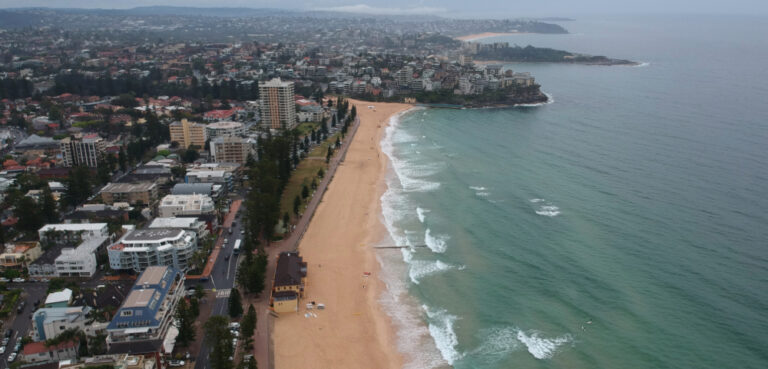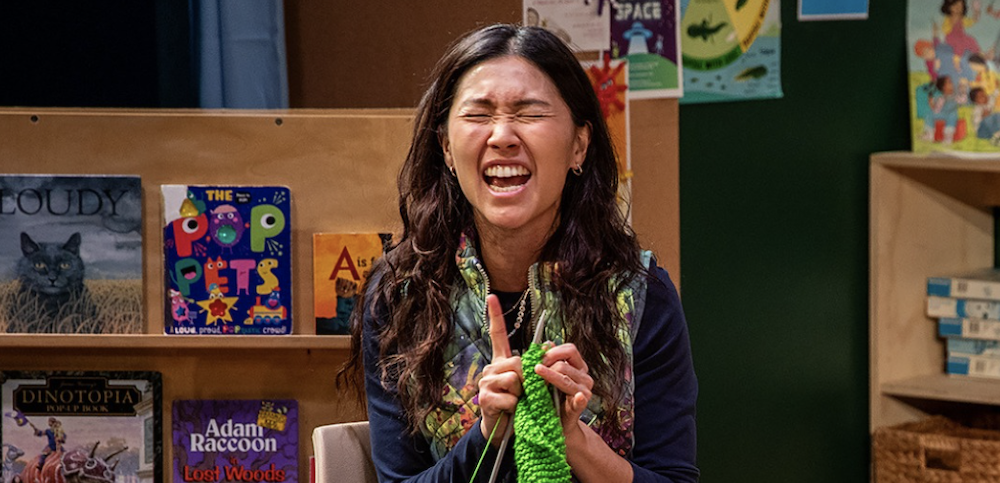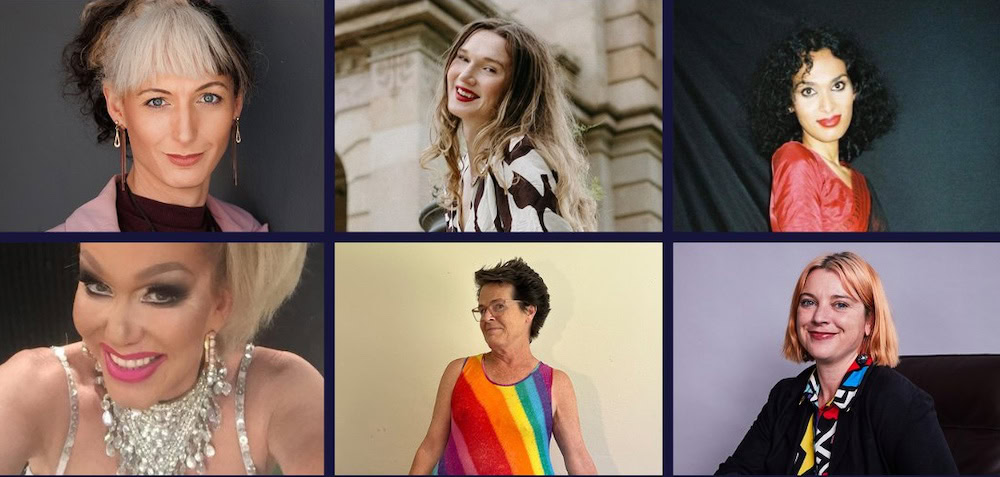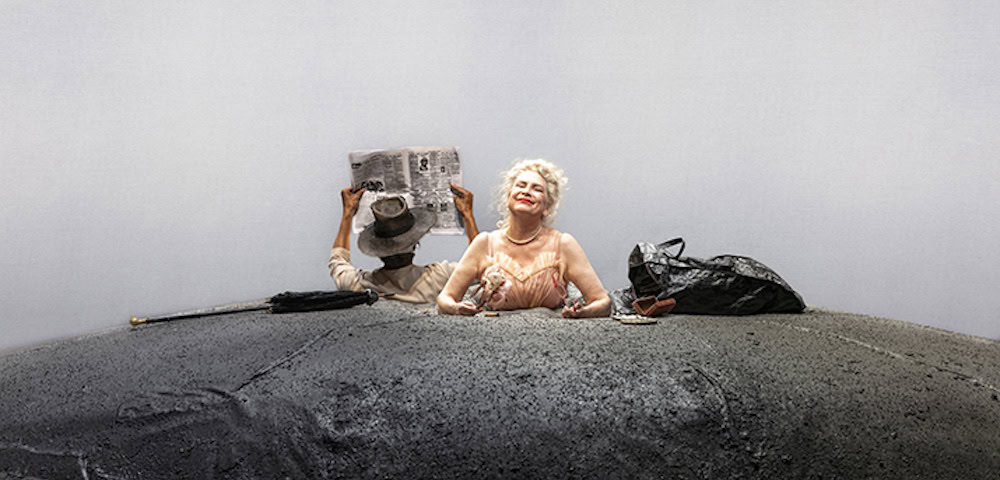
PICTURES OF BRIGHT LIGHTS
A mythological mining town by the sea, a visiting carnival, a mysterious Story Teller and a family ruptured by a dark secret. So goes Pictures of Bright Lights, a new work by writer Maree Freeman and director Stephen Nicolazzo as part of the Tamarama Rock Surfers’ all-Australian program. If the high-wattage cast (TV veteran Caroline Craig, Sydney Fringe favourite Eryn Jean Norvill, and Kurt Phelan) and enigmatic description weren’t enough to entice you, we caught up with Nicolazzo to find out more.
Pictures of Bright Lights finds you working with fellow NIDA graduate Maree Freeman. How does this collaborative process work?
Maree and I have developed a shorthand with each other, which makes the process quite easy and relaxed. We spend a lot of time reading the script out loud, nutting out problems by taking on characters and constantly questioning their motives. As we’re both so deeply connected to the world of the play it can sometimes feel like we’re living in a strange universe where everything but the play seems unreal. When I started working with Maree I was fascinated by the way her brain worked, how she dealt with emotions, and because of our similarities we have been able to genuinely collaborate on developing her writing for the stage. Having worked on this play together for over a year now, it is a little difficult to define how the process works, all I can say is that it is about negotiation, constantly questioning each other and the work, and the knowledge that our ideas can be realised theatrically.
What is the significance of the arrival of the carnival in the story?
The carnival represents everything we can’t control, desire, change, and the truth. Its arrival is symbolic of these things coming to the surface and penetrating our tightly structured sense of reality. The carnival, with all of its pretty lights and freakish characters is a place where we can find joy and solace when we’re crippled by circumstance and a really lousy situation. Its arrival totally shifts the dynamic between a mother and daughter, taking their relationship out of an enclosed bubble and into the unknown.
The premise sounds quite fantastical. As a director, how do you ground the tale and make it seem real?
My main focus is the real tragedy of the play and whilst fantasy and imagination are used to puncture reality it acts as a catalyst for revelation. Funnily, for me as a director, the fantastical seems more real in a way as it allows our more intense emotional selves to rise up without inhibition. It provides a safe house for truth to fly and I suppose the real tragedy that I speak of, the thing that makes the tale grounded, is that we are constantly trying to fight our fantasies, to censor ourselves from dreaming. When working with the actors, there is very little discussion about the fantastical nature of the premise rather an active pursuit of understanding exactly what journey or what pain each are experiencing that causes fantasies to develop.
The characters are nameless – instead are Child, Mother, Daddy, Story Teller. Why?
This is related to the archetypal model of the story. Names suggest an individual personal struggle however what we’re dealing with in this play is storytelling, fable, and myth. This tale is one that could potentially have been told for thousands of years, and will be told again for another thousand. It is familiar (despite being quite bent). A wiseman’s tale. Therefore we simplify, you know, “Once upon a time there was a Mother who didn’t want her Child to…” etc. It really works with the Child’s perception of things too, her will to be defined, to find a name when being relegated to a certain regime or set of principles in someone else’s story (in this case her mother). We are constantly being put into boxes in order to make things clearer so I believe the absence of names alludes to this dilemma. When we are labelled a child, this seems to stick, when we become mothers or fathers, this is the title or persona we must take on. You really do find yourself in a position where your name almost becomes obsolete, for your role is what dictates your actions.
This production has scored some great actors – Caroline Craig, Eryn Jean Norvill, and Kurt Phelan. What do they bring to the stage?
I know! We were in rehearsal the other day and hit a wall, upon hitting this wall we went into an improvisation of one of the pivotal scenes in the play. By the end of this improvisation, Caroline and Kurt were in tears, as was I. EJ was left with a lot of clarity and scope. Each of them has brought their heart onto this project and has elegantly tackled the material with guts and passion. What they bring to the stage is a considered and warm interpretation of character, structure, and theatricality. Their ability to tackle, question, and immerse themselves in a play that has never been staged has been the greatest joy for Maree and I. Actors who are willing to take risks and embrace new Australian work are dedicated beasts, and these three have been so pivotal in the development of our work on the show.
Your company, Little Ones, straddles Melbourne and Sydney. What do you think the main difference between the two cities is when it comes to theatre?
After growing up in Melbourne and producing work there for quite some time, I suppose the main difference I have noticed lies in accessibility for artists to simply put on a show and take a chance. In Sydney, there is a degree of professional expectation, which I certainly admire and respond to, however it is a little harder to experiment and learn how to find an audience. The Tamarama Rock Surfers though, are a company that really push this, which is why I am quite excited to be involved in their season. Both cities have a rich theatrical landscape I suppose the only difference is that there is a little more independent work going on in Melbourne at the moment. What I love about Sydney though is that it really pushes you to fight to find an audience and it is in the fight that you can really solidify what you want to do.
What do you hope people will leave Pictures of Bright Lights feeling?
Whenever I watch it, I leave with goose bumps and a strong will to find happiness. I really would like an audience to experience that when they see Pictures of Bright Lights. If they feel something in their heart that makes them want to dream and see a little magic in reality then I will be very happy.
May 4-28, Bondi Pavilion Theatre, Queen Elizabeth Dr, Bondi Beach, $21-33, 9365 0147, rocksurfers.org









